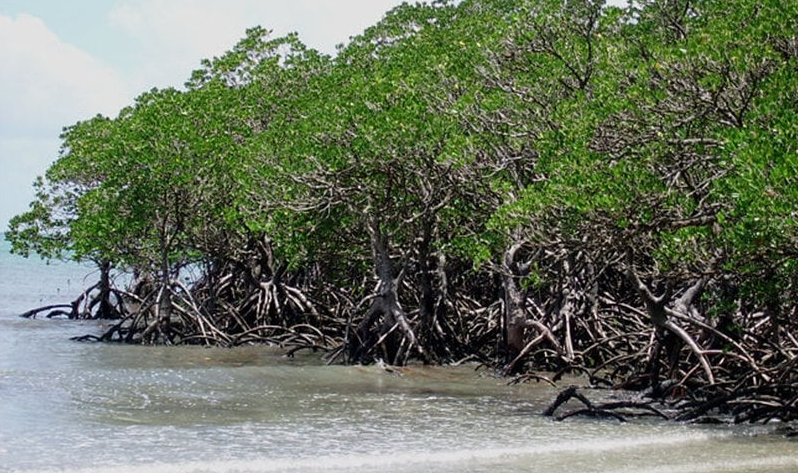The Zakhara Seggaran Swamp is a remarkable wetland ecosystem, renowned for its rich biodiversity and cultural significance. Located in [specific geographic location], this expansive swamp serves not only as a crucial habitat for various species but also as a vital resource for the local communities that depend on it for their livelihoods. This article explores the ecological importance of Zakhara Seggaran Swamp, its cultural heritage, and the need for sustainable management to ensure its preservation.
Ecological Importance
Zakhara Seggaran Swamp is a vibrant ecosystem teeming with life. It provides a habitat for numerous plant and animal species, including some that are endangered. The swamp’s unique environment supports a diverse range of flora, from aquatic plants to lush vegetation that surrounds the water bodies.
Biodiversity Hotspot
The swamp is home to various species of fish, birds, amphibians, and insects, making it a hotspot for biodiversity. Ornithologists often visit the area to study migratory bird patterns, while researchers investigate the ecological interactions within this wetland. The presence of these species underscores the importance of the swamp in maintaining regional biodiversity.
Natural Water Filtration
In addition to supporting wildlife, Zakhara Seggaran Swamp plays a critical role as a natural water filtration system. The vegetation within the swamp helps purify water, filtering out pollutants and sediments before they reach larger bodies of water. This function is essential for maintaining the overall health of the regional ecosystem.
Cultural Significance
The swamp is not only an ecological treasure but also holds cultural importance for the communities that surround it. For generations, local populations have relied on the resources provided by Zakhara Seggaran Swamp, which include:
Livelihoods
Fishing and farming are integral to the economy of nearby communities. The swamp offers an abundance of fish species, which provide food and income for local families. Additionally, the rich soil surrounding the swamp is conducive to agriculture, allowing residents to cultivate crops that are essential for their sustenance.
Eco-Tourism
With its stunning landscapes and diverse wildlife, Zakhara Seggaran Swamp has become a destination for eco-tourism. Tourists visit the area to experience its natural beauty, participate in guided tours, and engage in birdwatching and photography. This influx of visitors not only generates revenue for local businesses but also raises awareness about the importance of conservation.
Conservation and Sustainable Use
Understanding the ecological and cultural value of Zakhara Seggaran Swamp is vital for its preservation. However, the area faces challenges such as pollution, habitat degradation, and climate change. Sustainable management practices are essential to ensure that the swamp can continue to support its diverse species and the livelihoods of local communities.
Community Involvement
Involving local communities in conservation efforts is crucial. By educating residents about the importance of the swamp and providing them with the tools and resources needed for sustainable practices, stakeholders can foster a sense of stewardship. Community-led initiatives can help balance the needs of development with ecological preservation.
Research and Monitoring
Ongoing scientific research and environmental monitoring are necessary to track the health of the swamp and its inhabitants. Collaboration between scientists, conservationists, and local communities can lead to effective strategies for protecting this unique ecosystem.
Conclusion
Zakhara Seggaran Swamp is a vital ecological and cultural resource that warrants attention and protection. Its rich biodiversity, role as a natural water filter, and significance to local livelihoods highlight the need for sustainable management practices. By understanding and valuing this unique wetland, we can work towards ensuring its preservation for future generations, allowing both nature and communities to thrive in harmony.
FAQs
1. What is Zakhara Seggaran Swamp?
Zakhara Seggaran Swamp is a unique and expansive wetland area known for its rich biodiversity and cultural significance, located in [specific geographic location].
2. Why is the swamp ecologically important?
The swamp serves as a habitat for numerous species, including some endangered ones, and acts as a natural water filtration system, helping to purify water and maintain the health of the surrounding ecosystem.
3. What types of species can be found in Zakhara Seggaran Swamp?
The swamp is home to various fish, birds, amphibians, and insects, making it a biodiversity hotspot. It supports both aquatic and terrestrial plant life as well.
4. How do local communities benefit from the swamp?
Local communities rely on the swamp for fishing, farming, and eco-tourism, which provide essential resources and income. The swamp’s rich environment sustains their livelihoods.
5. What role does eco-tourism play in the region?
Eco-tourism generates revenue for local businesses and raises awareness about the importance of conservation efforts in the swamp. It attracts visitors interested in nature, wildlife, and photography.
6. What threats does Zakhara Seggaran Swamp face?
The swamp is threatened by pollution, habitat degradation, climate change, and over-exploitation of resources. These challenges can impact its biodiversity and the livelihoods of local communities.
7. How can conservation efforts be implemented?
Conservation efforts can include community involvement, education about sustainable practices, and collaboration between scientists, conservationists, and local residents to develop effective management strategies.
8. What is the importance of community involvement in conservation?
Involving local communities in conservation fosters a sense of stewardship, ensuring that they understand the value of the swamp and are invested in its preservation.
9. How does Zakhara Seggaran Swamp contribute to water quality?
The swamp’s vegetation acts as a natural filter, removing pollutants and sediments from water before it reaches larger water bodies, thereby improving overall water quality.
10. What can visitors do to support the swamp’s conservation?
Visitors can support conservation efforts by practicing responsible tourism, following local guidelines, participating in educational programs, and supporting businesses that prioritize sustainable practices.
